UFOs and Vimanas
- UFOk és "Repülő Szekerek" -
2013.
 |
Vimanas are described in
ancient Indian literature as the ‘chariots of the gods’, a sort of
technological vehicles similar to modern one but also able to have much
more incredible powers in confront to our airplanes.
In the Vedic literature of India, there are
many descriptions of flying machines that are generally called
„vimanas”. These fall into two categories: (1) manmade craft that
resemble airplanes and fly with the aid of birdlike wings, and (2)
unstreamlined structures that fly in a mysterious manner and are
generally not made by human beings. The machines in category (1) are
described mainly in medieval, secular Sanskrit works dealing with
architecture, automata, military siege engines, and other mechanical
contrivances. Those in category (2) are described in ancient works such
as the Rig Veda, the Mahabharata, the Ramayana, and the Puranas, and
they have many features reminiscent of UFOs.
Ancient Flying Machines
Reference to ancient Indian flying vehicles comes
from ancient Indian sources, many are the well known ancient Indian
Epics, and there are literally hundreds of them. Most of them have not
even been translated into English yet from the old sanskrit.
|
It is claimed that a few years ago, the Chinese discovered some sanskrit documents in Lhasa, Tibet and sent them to the University of Chandrigarh to be translated. Dr. Ruth Reyna of the University said recently that the documents contain directions for building interstellar spaceships!
Their method of propulsion, she said, was "anti-gravitational" and was based upon a system analogous to that of "laghima," the unknown power of the ego existing in man’s physiological makeup, "a centrifugal force strong enough to counteract all gravitational pull." According to Hindu Yogis, it is this "laghima" which enables a person to levitate. Dr. Reyna said that on board these machines, which were called "Astras" by the text, the ancient Indians could have sent a detachment of men onto any planet, according to the document, which is thought to be thousands of years old. The manuscripts were also said to reveal the secret of "antima", "the cap of invisibility" and "garima", "how to become as heavy as a mountain of lead."
» Shivkur Bapuji Talpade was
born in 1864, was a Sanskrit scholar. His birth place is Chirabazar at
Dukkarwadi in Bombay. From his young age was attracted by the » Vaimanika Shastra (Aeronautical Science) expounded by the great Indian sage Maharishi Bhardwaja.
Shivkur Bapuji Talpade’s unmanned aircraft flew to a height of 1500 feet before crashing down and the historian, Knapp adds that additional information on the mercury engines can be found in the ancient Vedic text called Samaranga Sutradhara. This text also devotes 230 verses, to the use of these machines in peace and war.
|
The Indologist William Clarendon, who has written down a detailed description of the mercury vortex engine in his translation of Samaranga Sutradhara quotes thus,
‘Inside the circular air frame, place the mercury-engine with its solar mercury boiler at the aircraft center. By means of the power latent in the heated mercury which sets the driving whirlwind in motion a man sitting inside may travel a great distance in a most marvelous manner.
Four strong mercury containers must be built into the interior structure. When these have been heated by fire through solar or other sources the vimana (aircraft) develops thunder-power through the mercury. It is also added that this success of an Indian scientist was not liked by the Imperial rulers.
Warned by the British Government the Maharaja of Baroda stopped helping Talpade. His efforts to make known the greatness of Vedic Shastras was recognized by Indian scholars, who gave him the title of Vidya Prakash Pra-deep.
[ Source : Biblioteca Pleyades - "The Vimanas : The Ancient Flying Machines" by Vigyan Prasar]
Vimanas of Ancient India
India, according to Dr. V. Raghavan, retired
head of the Sanskrit department of India's prestigious University of
Madras, was alone in playing host to extraterrestrials in prehistory.
Dr. Raghavan contends that centuries-old documents in Sanskrit (the
classical language of India and Hinduism) prove that aliens from outer
space visited his nation.
"Fifty years of researching this ancient
works convinces me that there are livings beings on other planets, and
that they visited earth as far back as 4,000 B.C.", the scholar says.
"There is a just a mass of fascinating information about flying
machines, even fantastic science fiction weapons, that can be found in
translations of the Vedas (scriptures), Indian epics, and other ancient
Sanskrit text".
The Vedic traditions of India tell us that we
are now in the Fourth Age of mankind. The Vedas call them the "The
Golden Age", "The Silver Age", and "The Bronze Age" and we are now,
according to their scriptures in the "The Iron Age". As we approach the
end of the 20th century both Native Americans, Mayans, and Incans,
prophecies claim that we are coming to the end of an age. Sanskrit texts
are filled with references to Gods who fought battles in the sky using
Vimanas equipped with weapons as deadly as any we can deploy in these
more enlightened times.
Sanskrit texts are filled with references to gods who fought battles in the sky using Vimanas equipped with weapons as deadly as any we can deploy in these more enlightened times.
For example, there is a passage in the Ramayana which reads:
"The Puspaka car that resembles the Sun and belongs to my brother was brought by the powerful Ravan; that aerial and excellent car going everywhere at will .... that car resembling a bright cloud in the sky."
".. and the King [Rama] got in, and the excellent car at the command of the Raghira, rose up into the higher atmosphere."
In the Mahabharatra, an ancient Indian poem of enormous length, we learn that an individual named Asura Maya had a Vimana measuring
twelve cubits in circumference, with four strong wheels. The poem is a
veritable gold mine of information relating to conflicts betweengods who settled their differences apparently using weapons as lethal as the ones we are capable of deploying. Apart from ’blazing missiles’, the poem records the use of other deadly weapons. ’Indra’s Dart’ operated via a circular ’reflector’.
When switched on, it produced a ’shaft
of light’ which, when focused on any target, immediately ’consumed it
with its power’. In one particular exchange, the hero, Krishna, is pursuing his enemy, Salva,
in the sky, when Salva’s Vimana, the Saubha is made invisible in some
way. Undeterred, Krishna immediately fires off a special weapon:
’I quickly laid on an arrow, which killed by seeking out sound’.Many other terrible weapons are described, quite matter of factly, in the Mahabharata, but the most fearsome of all is the one used against the Vrishis. The narrative records: "Gurkha flying in his swift and powerful Vimana hurled against the three cities of the Vrishis and Andhakas a single projectile charged with all the power of the Universe. An incandescent column of smoke and fire, as brilliant as ten thousands suns, rose in all its splendor. It was the unknown weapon, the Iron Thunderbolt, a gigantic messenger of death which reduced to ashes the entire race of the Vrishnis and Andhakas." |
|
It is important to note, that these kinds of
records are not isolated. They can be cross-correlated with similar
reports in other ancient civilizations.
The after-affects of this Iron Thunderbolt have an ominously recognizable ring. Apparently, those killed by it were so burnt that their corpses were unidentifiable. The survivors fared little etter, as it caused their hair and nails to fall out.
The after-affects of this Iron Thunderbolt have an ominously recognizable ring. Apparently, those killed by it were so burnt that their corpses were unidentifiable. The survivors fared little etter, as it caused their hair and nails to fall out.
|
Perhaps the most disturbing and
challenging, information about these allegedly mythical Vimanas in the
ancient records is that there are some matter-of-fact records,
describing how to build one. In their way, the instructions are quite
precise.
In the Sanskrit Samarangana Sutradhara, it is written:
The Hakatha (Laws of the Babylonians) states quite unambiguously: "The privilege of operating a flying machine is great. The knowledge of flight is among the most ancient of our inheritances. A gift from ’those from upon high’. We received it from them as a means of saving many lives."More fantastic still is the information given in the ancient Chaldean work, The Sifrala, which contains over one hundred pages of technical details on building a flying machine. It contains words which translate as graphite rod, copper coils, crystal indicator, vibrating spheres, stable angles, etc. |
Ancient Indian Aircraft Technology
Many researchers into the UFO enigma tend to overlook
a very important fact. While it assumed that most flying saucers are of
alien, or perhaps Governmental Military origin, another possible origin
of UFOs is ancient India and Atlantis.
|
What we know about ancient Indian flying
vehicles comes from ancient Indian sources; written texts that have come
down to us through the centuries. There is no doubt that most of these
texts are authentic; many are the well known ancient Indian Epics
themselves, and there are literally hundreds of them. Most of them have
not even been translated into English yet from the old Sanskrit.
The Indian Emperor Ashoka started a "Secret Society of the Nine Unknown Men":
great Indian scientists who were supposed to catalogue the many
sciences. Ashoka kept their work secret because he was afraid that the
advanced science catalogued by these men, culled from ancient Indian
sources, would be used for the evil purpose of war, which Ashoka was
strongly against, having been converted to Buddhism after defeating a
rival army in a bloody battle.
The "Nine Unknown Men" wrote a total of nine books, presumably one each.
Book number was "The Secrets of Gravitation!"
This book, known to historians, but not actually seen by them dealt
chiefly with "gravity control." It is presumably still around somewhere,
kept in a secret library in India, Tibet or elsewhere (perhaps even in
North America somewhere). One can certainly understand Ashoka’s
reasoning for wanting to keep such knowledge a secret, assuming it
exists. Ashoka was also aware devastating wars using such advanced
vehicles and other "futuristic weapons" that had destroyed the ancient Indian "Rama Empire" several thousand years before.
Only a few years ago, the Chinese discovered
some Sanskrit documents in Lhasa, Tibet and sent them to the University
of Chandrigarh to be translated. Dr. Ruth Reyna of the University said
recently that the documents contain directions for building interstellar
spaceships!
|
Their method of propulsion, she said, was
"anti-gravitational" and was based upon a system analogous to that of
"laghima," the unknown power of the ego existing in man's physiological
makeup, "a centrifugal force strong enough to counteract all
gravitational pull." According to Hindu Yogis, it is this "laghima"
which enables a person to levitate.
Dr. Reyna said that on board these machines, which
were called "Astras" by the text, the ancient Indians could have sent a
detachment of men onto any planet, according to the document, which is
thought to be thousands of years old. The manuscripts were also said to
reveal the secret of "antima"; "the cap of invisibility" and "garima";
"how to become as heavy as a mountain of lead."
Naturally, Indian scientists did not take the texts
very seriously, but then became more positive about the value of them
when the Chinese announced that they were including certain parts of the
data for study in their space program! This was one of the first
instances of a government admitting to be researching anti-gravity.
The manuscripts did not say definitely that
interplanetary travel was ever made but did mention, of all things, a
planned trip to the Moon, though it is not clear whether this trip was
actually carried out. However, one of the great Indian epics, the Ramayana,
does have a highly detailed story in it of a trip to the moon in a
Vimana (or "Astra"), and in fact details a battle on the moon with an
"Asvin" (or "Atlantean") airship.
This is but a small bit of recent evidence of
anti-gravity and aerospace technology used by Indians. To really
understand the technology, we must go much further back in time.
The so-called "Rama Empire" of Northern India
and Pakistan developed at least fifteen thousand years ago on the Indian
sub-continent and was a nation of many large, sophisticated cities,
many of which are still to be found in the deserts of Pakistan,
northern, and western India. Rama existed, apparently, parallel to the
Atlantean civilization in the mid-Atlantic Ocean, and was ruled by
"enlightened Priest-Kings" who governed the cities, The seven greatest
capital cities of Rama were known in classical Hindu texts as "The Seven
Rishi Cities."
According to ancient Indian texts, the people had flying machines which were called "Vimanas."
The ancient Indian epic describes a Vimana as a double-deck, circular
aircraft with portholes and a dome, much as we would imagine a flying
saucer. It flew with the "speed of the wind" and gave forth a "melodious
sound." There were at least four different types of Vimanas; some
saucer shaped, others like long cylinders ("cigar shaped airships").
The ancient Indian texts on Vimanas are so
numerous, it would take volumes to relate what they had to say. The
ancient Indians, who manufactured these ships themselves, wrote entire
flight manuals on the control of the various types of Vimanas, many of
which are still in existence, and some have even been translated into
English.
|
|
The Samara Sutradhara is a scientific treatise
dealing with every possible angle of air travel in a Vimana. There are
230 stanzas dealing with the construction, take-off, cruising for
thousand of miles, normal and forced landings, and even possible
collisions with birds.
In 1875, the Vaimanika Shastra, a fourth century B.C. text written by Bharadvajy the Wise,
using even older texts as his source, was rediscovered in a temple in
India. It dealt with the operation of Vimanas and included information
on the steering, precautions for long flights, protection of the
airships from storms and lightening and how to switch the drive to
"solar energy" from a free energy source which sounds like
"anti-gravity."
|
The » Vaimanika Shastra (or Vymaanika-Shaastra)
has eight chapters with diagrams, describing three types of aircraft,
including apparatuses that could neither catch on fire nor break. It
also mentions 31 essential parts of these vehicles and 16 materials from
which they are constructed, which absorb light and heat; for which
reason they were considered suitable for the construction of Vimanas.
This document has been translated into English and is available by
writing the publisher: VYMAANIDASHAASTRA AERONAUTICS by Maharishi
Bharadwaaja, translated into English and edited, printed and published
by Mr. G. R. Josyer, Mysore, India, 1979 (sorry, no street address). Mr.
Josyer is the director of the International Academy of Sanskrit
Investigation located in Mysore.
There seems to be no doubt that Vimanas were
powered by some sort of "anti-gravity." Vimanas took off vertically, and
were capable of hovering in the sky, like a modern helicopter or
dirigible. Bharadvajy the Wise refers to no less than 70 authorities and
10 experts of air travel in antiquity. These sources are now lost.
Vimanas were kept in a Vimana Griha,
a kind of hangar, and were sometimes said to be propelled by a
yellowish-white liquid, and sometimes by some sort of mercury compound,
though writers seem confused in this matter. It is most likely that the
later writers on Vimanas, wrote as observers and from earlier texts, and
were understandably confused on the principle of their propulsion. The
"yellowish-white liquid" sounds suspiciously like gasoline, and perhaps
Vimanas had a number of different propulsion sources, including
combustion engines and even "pulse-jet" engines.
It is interesting to note, that the Nazis developed the first practical pulse-jet engines for their V-8 rocket "buzz bombs." Hitler and the Nazi staff were exceptionally interested in ancient India and Tibet and
sent expeditions to both these places yearly, starting in the 30’s, in
order to gather esoteric evidence that they did so, and perhaps it was
from these people that the Nazis gained some of their scientific
information!
According to the Dronaparva, part of the Mahabarata, and the Ramayana, one Vimana described
was shaped like a sphere and born along at great speed on a mighty wind
generated by mercury. It moved like a UFO, going up, down, backwards
and forewards as the pilot desired.
|
In another Indian source, the Samar, Vimanas
were "iron machines, well-knit and smooth, with a charge of mercury that
shot out of the back in the form of a roaring flame."
Another work called the Samaranganasutradhara
describes how the vehicles were constructed. It is possible that mercury
did have something to do with the propulsion, or more possibly, with
the guidance system. Curiously, Soviet scientists have discovered what
they call "age-old instruments used in navigating cosmic vehicles" in
caves in Turkestan and the Gobi Desert. The "devices" are hemispherical
objects of glass or porcelain, ending in a cone with a drop of mercury
inside.
It is evident that ancient Indians flew around in these vehicles, all over Asia, to Atlantis presumably; and even, apparently, to South America. Writings found at Mohenjodaro in
Pakistan (presumed to be one of the "Seven Rishi Cities of the Rama
Empire") and still undeciphered, has also been found in one other place
in the world: Easter Island! Writing on Easter Island, called Rongo-Rongo writing, is also undeciphered, and is uncannily similar to the Mohenjodaro script.
Was Easter Island an air base for the Rama
Empire's Vimana route? (At the Mohenjo-Daro Vimana-drome, as the
passenger walks down the concourse, he hears the sweet, melodic sound of
the announcer over the loudspeaker,
"Rama Airways flight number seven for Bali,
Easter Island, Nazca, and Atlantis is now ready for boarding. Passengers
please proceed to gate number..") in Tibet, no small distance, and
speaks of the "fiery chariot" thusly: "Bhima flew along in his car,
resplendent as the sun and loud as thunder... The flying chariot shone
like a flame in the night sky of summer ... it swept by like a comet...
It was as if two suns were shining. Then the chariot rose up and all the
heaven brightened."
In the Mahavira of Bhavabhuti, a Jain text of the eighth century culled from older texts and traditions, we read:
The Vedas, ancient Hindu poems, thought to be the oldest of all the Indian texts, describe Vimanas of
various shapes and sizes: the "ahnihotra-vimana" with two engines, the
"elephant-vimana" with more engines, and other types named after the
kingfisher, ibis and other animals.
|
|
|
The Atlanteans, known as "Asvins"
in the Indian writings, were apparently even more advanced
technologically than the Indians, and certainly of a more war-like
temperament.
Although no ancient texts on Atlantean Vailixi are
known to exist, some information has come down through esoteric,
"occult" sources which describe their flying machines. Similar, if not
identical to Vimanas, Vailixiwere generally "cigar shaped"
and had the capability of maneuvering underwater as well as in the
atmosphere or even outer space. Other vehicles, like Vimanas, were saucer shaped, and could apparently also be submerged.
According to Eklal Kueshana, author of "The Ultimate Frontier," in an article he wrote in 1966, Vailixi were first developed in Atlantis 20,000 years ago, and the most common ones are, "saucershaped of generally trapezoidal cross-section with three hemispherical engine pods on the underside." |
The Ramayana, Mahabarata and other
texts speak of the hideous war that took place, some ten or twelve
thousand years ago between Atlantis and Rama using weapons of
destruction that could not be imagined by readers until the second half
of this century.
The ancient Mahabharata, one of the sources on Vimanas, goes on to tell the awesome destructiveness of the war:
"...(the weapon was) a single projectile |
|
It would seem that the Mahabharata is describing an
atomic war! References like this one are not isolated; but battles,
using a fantastic array of weapons and aerial vehicles are common in all
the epic Indian books. One even describes a Vimana-Vailix battle on the
Moon! The above section very accurately describes what an atomic
explosion would look like and the effects of the radioactivity on the
population. Jumping into water is the only respite.
When the Rishi City of Mohenjodaro was excavated by
archeologists in the last century, they found skeletons just lying in
the streets, some of them holding hands, as if some great doom had
suddenly overtaken them. These skeletons are among the most radioactive
ever found, on a par with those found at Hiroshima and Nagasaki. Ancient
cities whose brick and stone walls have literally been vitrified, that
is-fused together, can be found in India, Ireland, Scotland, France,
Turkey and other places. There is no logical explanation for the
vitrification of stone forts and cities, except from an atomic blast.
Furthermore, at Mohenjo-Daro, a well planned city laid on a grid, with a
plumbing system superior to those used in Pakistan and India today, the
streets were littered with "black lumps of glass." These globs of glass
were discovered to be clay pots that had melted under intense heat!
|
With the cataclysmic sinking of Atlantis and
the wiping out of Rama with atomic weapons, the world collapsed into a
"stone age" of sorts, and modern history picks up a few thousand years
later. Yet, it would seem that not all the Vimanas and Vailixi of Rama
and Atlantis were gone. Built to last for thousands of of years, many of
them would still be in use, as evidenced by Ashoka's "Nine Unknown Men"
and the Lhasa manuscript.
That secret societies or "Brotherhoods" of
exceptional, "enlightened" human beings would have preserved these
inventions and the knowledge of science, history, etc., does not seem
surprising. Many well known historical personages including Jesus,
Buddha, Lao Tzu, Confucius, Krishna, Zoroaster, Mahavira, Quetzalcoatl,
Akhenaton, Moses, and more recent inventors and of course many other
people who will probably remain anonymous, were probably members of such
a secret organization.
It is interesting to note that when Alexander
the Great invaded India more than two thousand years ago, his historians
chronicled that at one point they were attacked by "flying, fiery
shields" that dove at his army and frightened the cavalry. These "flying
saucers" did not use any atomic bombs or beam weapons on Alexander's
army however, perhaps out of benevolence, and Alexander went on to
conquer India.
|
It has been suggested by many writers that these
"Brotherhoods" keep some of their Vimanas and Vailixi in secret caverns
in Tibet or some other place is Central Asia, and the Lop Nor Desert in
western China is known to be the center of a great UFO mystery. Perhaps
it is here that many of the airships are still kept, in underground
bases much as the Americans, British and Soviets have built around the
world in the past few decades.
Still, not all UFO activity can be accounted for by
old Vimanas making trips to the Moon for some reason. Undoubtedly, some
are from the Military Governments of the world, and possibly even from
other planets. Of course, many UFO sightings are "swamp, gas, clouds,
hoaxes, and hallucinations, while there is considerable evidence that
many UFO sightings, especially "kidnappings" and the like, are the
result of what is generally called "telepathic hypnosis." One common
thread that often runs between "Alien kidnappings," "sex with aliens,"
and other "close encounters of a third kind" is a buzzing in the ears
just before the encounter. According to many well informed people, this
is a sure sign of telepathic hypnosis."
[ Source: » World Mysteries from The Anti-Gravity Handbook (Lost Science) by D. Hatcher Childress) ]
Vimanas in Vedic Literature
UFOs and Vimanas
In supplying information about the advancements of Vedic science, the subject of Vedic airplanes, vimanas,
is almost in a classification of its own. Some of this information is
so amazing that for some people it may border science fiction.
Nonetheless, as we uncover and explain it, it provides serious food for
thought.
First of all we need to understand
that the Vedic conception of universal time is divided into different
periods. For example, a period called one day of Brahma is equivalent to
4,320,000,000 of our years on earth. Brahma's night is equally as long
and there are 360 of such days and nights in one year of Brahma. Each
day of Brahma is divided into one thousand cycles of four yugas, namely Satya-yuga, Treta-yuga, Dvapara-yuga, and finally the Kali-yuga, which is the yuga we
are presently experiencing. Satya-yuga lasts 1,728,000 years, and is an
age of purity when all residents live very long lives and can be fully
developed in spiritual understanding and mystical abilities and
remarkable powers.
Some of these abilities, or mystic siddhis,
include changing one's shape, becoming very large or microscopically
small, becoming very heavy or even weightless, securing any desirable
thing, becoming free of all desires, or even flying through the sky to
wherever one wanted to go on one's own volition. So at that time, the
need for mechanical flying machines was not necessary.
|
|
As the yugas continued, the purity
of the people, along with their mystical abilities, decreased by 25% in
each age. The age of Treta-yuga lasts 1,296,000 years. During that age,
the minds of humanity became more dense, and the ability for
understanding the higher spiritual principles of the Vedic path was also
more difficult. Naturally, the ability to fly through the sky by one's
own power was lost. After Treta-yuga, Dvapara-yuga lasts 864,000 years,
and Kali-yuga lasts 432,000 years, of which 5,000 have now already
passed. At the end of Kali-yuga, the age of Satya-yuga starts again and
the yugas continue through another cycle. One thousand such
cycles is one day of Brahma. Now that we are in Kali-yuga, almost all
spiritual understanding disappears, and whatever mystical abilities that
remain are almost insignificant.
|
It is explained that it was not until the beginning of Treta-yuga that the development of vimanas took place. In fact, Lord Brahma, the chief demigod and engineer of the universe, is said to have developed several vimanas for
some of the other demigods. These were in various natural shapes that
incorporated the use of wings, such as peacocks, eagles, swans, etc.
Other vimanas were developed for the wiser human beings by great seers of Vedic knowledge.
In the course of time, there were three basic types of vimanas. In Treta-yuga, men were adept in mantras or potent hymns. Thus, the vimanas of that age were powered by means of knowledge of mantras. In Dvapara-yuga, men had developed considerable knowledge of tantra, or ritual. Thus, the vimanas of Dvapara-yuga were powered by the use of tantric knowledge. In Kali-yuga, knowledge of both mantra and tantra are deficient. Thus, the vimanas of this age are known as kritaka, artificial or mechanical. In this way, there are three main types of vimanas, Vedic airplanes, according to the characteristics of each yuga.
Of these three types, there is listed 25 variations of the mantrika vimanas, 56 variations of the tantrica vimanas, and 25 varieties of the kritakaah vimanas as we find today in Kali-yuga. However, in regard to the shape and construction, there is no difference between any of these vimanas, but only in how they were powered or propelled, which would be by mantras, tantras, or mechanical engines.
|
The controversial text known as » Vaimanika Shastra (Vymaanika-Shaastra)
, said to be by Maharshi Bharadwaja, also describes in detail the
construction of what is called the mercury vortex engine. This is no
doubt of the same nature as the Vedic Ion engine that is propelled by
the use of mercury. Such an engine was built by » Shivkar Bapuji Talpade, based on descriptions in the Rig-veda, which he demonstrated in Mumbai (Bombay), India in 1895.
One western scholar of Indology Stephen-Knapp has tried to explain what » Shivkur Bapuji Talpade did. According to Knapp, the Vaimanika Shastra describes
in detail, the construction of what is called, the mercury vortex
engine the forerunner of the ion engines being made today.
Additional information on the mercury engines used in the vimanas can be found in the ancient Vedic text called the Samarangana Sutradhara.
This text also devotes 230 verses to the use of these machines in peace
and war. We will not provide the whole description of the mercury
vortex engine here, but we will include a short part of William
Clendenon's translation of the Samarangana Sutradhara from his 1990 book, Mercury, UFO Messenger of the Gods:
This provides a most simplistic idea of
the potential of the mercury engines. This is one kind of a propulsion
mechanism that the vimanas of Kali-yuga may use. Other
variations are also described. Not only do these texts contain
directions on how to make such engines, but they also have been found to
contain flight manuals, aerial routes, procedures for normal and forced
landings, instructions regarding the condition of the pilots, clothes
to wear while flying, the food to bring and eat, spare parts to have,
metals of which the craft needs to be made, power supplies, and so on.
Other texts also provide instructions on avoiding enemy craft, how to
see and hear what occupants are saying in enemy craft, how to become
invisible, and even what tactics to use in case of collisions with
birds. Some of these vimanas not only fly in the sky, but can also maneuver on land and fly into the sea and travel under water.
There are many ancient Vedic texts that describe or contain references to these vimanas, including the Ramayana, Mahabharata, Rig-veda, Yajur-veda, Atharva-veda, the Yuktilkalpataru of Bhoja (12th century A.D.), the Mayamatam (attributed to the architect Maya), plus other classic Vedic texts like the Satapathya Brahmana, Markandeya Purana, Vishnu Purana, Bhagavata Purana, the Harivamsa, the Uttararamcarita, the Harsacarita, the Tamil text Jivakacintamani, and others. From the various descriptions in these writings, we find vimanas in
many different shapes, including that of long cigars, blimp-like,
saucer-shapes, triangular, and even double-decked with portholes and a
dome on top of a circular craft. Some are silent, some belch fire and
make noise, some have a humming noise, and some disappear completely.
|
|
These various descriptions are not unlike the reports of UFOs that are seen today. In fact, David Childress, in his book Vimana Aircraft of Ancient India & Atlantis,
provides many reports, both recent and from the last few hundred years,
that describe eye witness accounts of encounters with UFOs that are no
different in size and shape than those described in these ancient Vedic
texts. Plus, when the pilots are seen close up, either fixing their
craft or stepping outside to look around, they are human-like, sometimes
with a Oriental appearance, in clothes that are relatively modern in
style. In other reports, we have read where the craft may have alien
type beings on board along with ordinary humans navigating the craft.
Does this mean that these are ancient vimanas that
still exist today? Are they stored in some underground caverns
somewhere? Or are they simply modern-built, using the ancient designs as
described in the Vedic texts? The UFOs that have been seen around the
world may not be from some distant galaxy, but may be from a secret
human society, or even military installation. However, many of the Vedic
texts do describe interplanetary travel. So even if these space
machines are from some other planet, they may be using the same
principles of propulsion that have already been described in the
universal Vedic literature. The answer awaits us.
[ Source: » Stephen Knapp ]
Vimanas in Sanskrit literature
Sanskrit texts are filled with references to
gods who fought battles in the sky using Vimanas equipped with weapons
as deadly as any we can deploy in these more enlightened times. Behind
all these ‘literary’ description there is something more, exist a real
technological background lost in the time but also
passed throughout ages as an oral tradition. We have founded some
quotations from classical Sanskrit literature, verses we had chosen
specifically to illustrate the visual appearance, nature and
capabilities generally ascribed to these ancient fabulous vehicles
known.
“Having spoken thus, Maharaja Nirga
made a complete circle around Lord Krishna and touched his crown to the
Lord’s feet. Granted permission to depart, King Nirga then boarded a
wonderful celestial car as all the people looked on.” (Bhagavata Purana)
“While Dhruva Maharaja was passing
through space, he saw, in succession, all the planets of the solar
system, and on the path he saw all the demigods in their vimanas
showering flowers upon him like rain.” (Bhagavata Purana)
“He traveled in that way through the
various planets, as the air passes freely in every direction. Coursing
through the air in that grand and splendid vimana, which could fly at
will, he surpassed even the Devas.” (Bhagavata Purana)
“Then the highly intelligent Asura Maya
built the cities . . . There were many palaces with gems. Aerial cars
shining like the sun, set with Padmaraga stones, moving in all
directions and looking like moonbeams, illuminated the cities.” (Siva Purana)
“When morning dawned, Rama, taking the
Celestial Car Puspaka had sent to him by Vivpishand, stood ready to
depart. Self-propelled was that car. It was large and finely painted. It
had two stories and many chambers with windows, and was draped with
flags and banners. It gave forth a melodious sound as it coursed along
its airy way.” (Ramayana)
“The Puspaka Car, that resembles the
sun and belongs to my brother, was brought by the powerful Ravan; that
aerial and excellent car, going everywhere at will, is ready for thee.
That car, resembling a bright cloud in the sky, is in the city of
Lanka.” (Ramayana)
“Beholding the car coming by force of
will Rama attained to an excess of astonishment. And the king got in,
and the excellent car, at the command of Raghira, rose up into the
higher atmosphere. And in that car, coursing at will, Rama greatly
delighted.” (Ramayana)
|
|
|
“Karna took up that fierce weapon,
which resembled the tongue of the Destroyer or the Sister of Death. That
terrible and effulgent dart, Naikartana, was hurled at the Rakshasa.
Beholding that excellent and blazing weapon . . . the Rakshasa began to
fly away in fear . . . Destroying that blazing illusion of Ghatotkacha
and piercing right through his breast that resplendent dart soared aloft
in the night . . . Ghatotkacha, then uttering diverse roars, fell,
deprived of life by the dart of Sakra.” (Mahabharata)
“The vimana had all necessary
equipment. It could not be conquered by the gods or demons. And it
radiated light and reverberated with a deep rumbling sound. Its beauty
captivated the minds of all who beheld it. Visvakarma, the lord of its
design and construction, had created it by the power of his austerities,
and its outline, like that of the sun, could not be easily delineated. (Mahabharata)
“And he also gave [unto Arjuna] a car
furnished with celestial weapons whose banner bore a large ape . . . And
its splendour, like that of the Sun, was so great that no one could
gaze at it. It was the very car riding upon which the lord Soma had
vanquished the Danavas. Resplendent with beauty, it looked like an
evening cloud reflecting the effulgence of the setting Sun.” (Mahabharata)
“Bhima flew along in his car,
resplendent as the sun and loud as thunder . . . The flying chariot
shone like a flame in the night sky of summer . . . it swept by like a
comet . . . It was if two suns were shining. Then the chariot rose up
and all the heavens brightened.” (Mahabharata)
“And on this sunlike, divine, wonderful
chariot the wise disciple of Kuru flew joyously upward. When becoming
invisible to the mortals who walk the earth, he saw wondrous airborne
chariots by the thousands.” (Mahabharata)
“And the celebrated Arjuna, having passed
through successive regions of the heavens, at last beheld the city of
Indra. And there he beheld celestial cars by thousands stationed in
their respective places [an airport?] and capable of going everywhere at
will, and he saw tens of thousands of such cars moving in every
direction.” (Mahabharata)
|
“And thereupon that best of cars
became still more dazzling with its splendour and was incapable of being
looked at by created beings, as the midday sun surrounded by a thousand
rays . . . And Achyuta, that tiger among men, riding with the two sons
of Pandu upon that celestial car . . . coming out of Girivraja, stopped
(for some time) on a level plain outside of town.” (Mahabharata)
“We beheld in the sky what appeared to
us to be a mass of scarlet cloud resembling the fierce flames of a
blazing fire. From that mass many blazing missiles flashed, and
tremendous roars, like the noise of a thousand drums beaten at once. And
from it fell many weapons winged with gold and thousands of
thunderbolts, with loud explosions, and many hundreds of fiery wheels.
Loud became the uproar of falling horses, slain by these missiles, and
of mighty elephants struck by the explosions . . . Those terrible
Rakshasas had the shape of large mounds stationed in the sky.” (Mahabharata)
“Vimanas, decked and equipped according
to rule, looked like heavenly structures in the sky . . . borne away
they looked like highly beautiful flights of birds. (Mahabharata)
“Gifted with great energy the Rakshasa
once more came down to Earth in his golden vimana . . . when it had
landed it looked like a beautifully shaped mound of antimony on the
surface of the ground.” (Ghatotrachabadma)
“The splendid chariot, made of silver and
coated with tiger-skin, and bright like the fire itself, making a noise
like the roaring of the clouds; defying all obstacles, adorned with
jewels and gold, dazzling to the eyesight and bright . . . went speedily
on, making space resound like unto the muttering cloud in the sky. He
issued out of his abode like the beautiful moon passing through a huge
cloud.” (Ayodhya Kandam, XVI, pp. 235-236)
|
|
King Yudhishthira’s Ascent to Heaven
From Protap Chandra Roy’s translation of the Mahabharata)
|
“Causing the heaven and the earth to
be filled by a loud sound, then Indra came to Yudhishthira on a car and
asked him to ascend it.
“Seeing his brothers fallen on the
earth, King Yudhishthira the just said to that deity of a thousand eyes
these words: ‘My brothers have all dropped down here! They must go with
me. Without them by me, I do not wish to go to the celestial region, O
lord of all the celestials. The delicate princess Draupadi, deserving of
every comfort, should go with us! You should permit this.’
“Indra answered, ‘You shall behold your
brothers in the celestial region. They have reached it before you.
Indeed, you shall see all of them there, with Krishna. Do not give way
to grief, O chief of the Bharatas! Having renounced their human bodies
they have gone there, O chief of the Bharata race! As for you, it is
ordained that you shall go there in this very body of yours.’”
[After a long debate between the two the following occurs.]
“Then Dharma and Indra and the other
deities, causing Yudhishthira to ascend on a car, went to the celestial
region. Those beings crowned with success and capable of going
everywhere at will, rode their respective cars. King Yudhishthira,
riding on his car, ascended quickly, causing the entire sky to blaze
with his effulgence.”
|
“Steeds and Wheels”
In both the Mahabharata and the Ramayana the
researcher encounters the rather puzzling use of “steeds” and “wheels”
(necessary componants of the conventional ground-bound war chariot). But
why use such terminology when describing aerial vehicles? At first,
this was a little baffling — after all, flying asses yoked to an airship?
These seemingly incongruous elements may be
nothing more than the result of strong Hindu tendencies to allegorize,
as well as translators who were sadly lacking in technological savvy and
vocabulary. First let’s consider the application of the term “wheels”
to the aircraft known as vimanas. In the Mahabharata one discovers this
enigmatic passage:
“Indra’s vimana endued with great effulgence and driven by Matali, came dividing the clouds and illuminating the firmament, filling the entire sky with its roar . . . also propellers furnished with wheels, working with atmospheric expansion, producing sounds loud as the roar of great masses of clouds. . . Indra’s vimana was whisked along with such speed that the eye could scarcely follow.” (Vana Parva, Sec. xlii)
Let me draw attention to the phrase
“propellers furnished with wheels, working with atmospheric expansion.”
This is the way a modern jet engine works: pulling in fresh air using
impeller blades, expanding the air by heating it, then directing it
through more blades, which turn a shaft connected to the forward
turbines, which packs in more air. If we substitute “impellers” for
propellers and “turbines” for wheels—both more modern terms—it begins to
make a great deal of sense.
Ancient drawings of these machines actually portray turbines and expansion chambers similar in some ways to our modern jet engines. So, at this point let me suggest that in many cases the Sanskrit word chakrashould be translated “turbine” rather than “wheel,” without doing violence to the Sanskrit.
The ancient Aryans of India tended to
allegorize a lot, making it difficult to look at their propulsion
systems from our scientific point of view. Often the vimanas were said
to be drawn through the sky by “celestial steeds” (whether horses,
swans, asses, or elephants). What means this?
No doubt some of these descriptions are
not allegories, but are presented in such a manner because the
propulsion units were deliberately constructed to resemble these
animals! The following passage illustrates this clearly describes:
|
|
*This is always the case in P. C. Roy’s translation of the Mahabharata(i.e.,
if a passage contains the word “vimana,” it is from one of the
alternate sources listed in the bibliography below). All excerpts from
theRamayana are from Manatha Nath Dutt’s translation (who uses the term “vimana”). The Puranas are from Dr. Richard L. Thompson’s work “Alien Identities”.
In one episode, for example, the Vrishnis, a
tribe whose warriors include the hero Krishna, are beset by the forces
of a leader named Salva.
"The cruel Salva had come mounted on the Saubha chariot that can go anywhere, and from it he killed many valiant Vrishni youths and evilly devastated all city parks."
The Saubha is at once Salva's city,
flagship, and battle headquarters. In it, he can fly wherever he
chooses. Fortunately, the Vrishni heroes are similarly well equipped,
and at one point have Salva at their mercy. The hero Pradyumna is about
to finish him off with a special weapon, when the highest gods stop him
"Not a man in battle is safe from this arrow," they say, and declare
that Salva will fall to Krishna.
Krishna took to the sky in pursuit of
Salva, but his Saubha clung to the sky at a leagues length... He threw
at me rockets, missiles, spears, spikes, battleaxes, three-bladed
javelins, flame-throwers, without pausing... The sky... seemed to hold a
hundred suns, a hundred moons... and a hundred myriad stars. Neither
day nor night could be made out, or the points of a compass.
Krishna, however, wards
off Salva's attack with what sounds like antiballistic missiles; I
warded them off as they loomed towards me.
With my swift-striking shafts, as they
flashed through the sky, And I cut them into two or three pieces with
mine -- There was a great din in the sky above. However, the Saubha
becomes invisible. Krishna then loads a special weapon, perhaps an
ancient version of a smart bomb? I quickly laid on an arrow, which
killed by seeking out sound, to kill them... All the Danavas [Salva's
troops] who had been screeching lay dead, killed by the blazing sun like
arrows that were triggered by sound.
|
|
|
Another chapter, describing the use of the Agneya weapon by the hero Adwattan.
And if that sounded like a firestorm,
then a similar weapon fired by Gurkha sounds like nothing less than a
nuclear blast complete with radioactive fallout;
|
Unknown alloys have been revealed in the ancient palm leaf manuscripts too. The writer and Sanskrit scholar Subramanyam Iyer
has spent many years of his life deciphering old collections of palm
leaves found in the villages of his native Karnataka in southern India.
One of the palm leaf manuscripts they intend to decipher is the Amsu Bodhini,
which, according to an anonymous text of 1931, contains information
about the planets; the different kinds of light, heat, color, and
electromagnetic fields; the methods used to construct machines capable
of attracting solar rays and, in turn, of analyzing and separating their
energy components; the possibility of conversing with people in remote
places and sending messages by cable; and the manufacture of machines to
transport people to other planets!
[ Source : Biblioteca Pleyades - "Ancient Writings tell of UFO visit 4.000 B.C." by John Burrows {Hungarian translation} ] ]
Vaimanika Shastra
The » Vaimānika Shāstra वैमानिक शास्त्र ("Science of Aeronautics" ; also Vimanika, Vymanika) is an early 20th century Sanskrit text on aeronautics, claimed to be obtained by mental channeling, about construction ofvimānas, the "chariots of the Gods", self-moving aerial cars mentioned in the Sanskrit epics.
The existence of the text was revealed in
1952 by G. R. Josyer, according to whom it is due to one Pandit
Subbaraya Shastry, who dictated it in 1918-1923. A Hindi translation was
published in 1959, the Sanskrit text with an English translation in
1973. It has 3000 shlokas in 8 chapters and was attributed by Shastry
to Maharishi Bharadvaja, which makes it of purportedly "ancient" origin,
and hence it has a certain notability in ancient astronaut theories.
Unlike modern treatises on aeronautics that
begin by discussing the general principles of flight before detailing
concepts of aircraft design, the Vaimanika Shastra straightaway gets
into quantitative description, as though a particular aircraft is being
described. The topics covered include, "definition of an airplane, a
pilot, aerial routes, food, clothing, metals, metal production, mirrors
and their uses in wars, varieties of machinery and yantras, planes like
‘mantrik’, ‘tantrik’, and ‘kritak’" and four planes called Shakuna,
Sundara, Rukma, and Tripura are described in greater detail. The extant
text is claimed to be only a small (one-fortieth) part of a larger work
Yantra Sarvaswa ("All about machines) composed by Maharishi Bharadwaj
and other sages for the "benefit of all mankind".
In 1991, the English portion and the
illustrations from the Josyer book were reprinted by David Hatcher
Childress in Vimana Aircraft of Ancient India & Atlantis as part of
the Lost Science Series. According to Childress, the 8 chapters treat
the following:
|
|
- The secrets of constructing aeroplanes, which will not break, which cannot be cut, will not catch fire, and cannot be destroyed.
- The secret of making planes motionless.
- The secret of making planes invisible.
- The secret of hearing conversations and other sounds in enemy places.
- The secret of retrieving photographs of the interior of enemy planes
- The secret of ascertaining the direction of enemy planes approach.
- The secret of making persons in enemy planes lose consciousness.
- The secret of destroying enemy planes.
The propulsion of the Vimanas according to Kanjilal (1985) is by a "Mercury Vortex Engines", apparently a concept similar to electric propulsion. Childress finds evidence for this "mercury vortex engine" in the Samarangana Sutradhara, an 11th century treatise on architecture.
J. B. Hare of the Internet Sacred Text Archive in 2005 compiled an online edition of Josyer's 1973 book, in the site's "UFOs" section. In his introduction, Hare writes
The Vymanika Shastra was first committed to writing between 1918 and 1923, and nobody is claiming that it came from some mysterious antique manuscript. The fact is, there are no manuscripts of this text prior to 1918, and nobody is claiming that there are. So on one level, this is not a hoax. You just have to buy into the assumption that 'channeling' works. ... there is no exposition of the theory of aviation (let alone antigravity). In plain terms, the VS never directly explains how Vimanas get up in the air. The text is top-heavy with long lists of often bizarre ingredients used to construct various subsystems. ... There is nothing here which Jules Verne couldn't have dreamed up, no mention of exotic elements or advanced construction techniques. The 1923 technical illustration based on the text ... are absurdly un-aerodynamic. They look like brutalist wedding cakes, with minarets, huge ornithopter wings and dinky propellers. In other words, they look like typical early 20th century fantasy flying machines with an Indian twist.
A 1974 study by researchers at the Indian Institute of Science, Bangalore found that the heavier-than-air aircraft that the Vaimanika Shastra described
were aeronautically unfeasible. The authors remarked that the
discussion of the principles of flight in the text were largely
perfunctory and incorrect, in some cases violating Newton's laws of motion. The study concluded:
Any reader by now would have concluded the obvious – that the planes described above are the best poor concoctions, rather than expressions of something real. None of the planes has properties or capabilities of being flown; the geometries are unimaginably horrendous from the point of view of flying; and the principles of propulsion make them resist rather than assist flying. The text and the drawings do not correlate with each other even thematically. The drawings definitely point to a knowledge of modern machinery. This can be explained on the basis of the fact that Shri Ellappa who made the drawings was in a local engineering college and was thus familiar with names and details of some machinery. Of course the text retains a structure in language and content from which its 'recent nature' cannot be asserted. We must hasten to point out that this does not imply an oriental nature of the text at all. All that may be said is that thematically the drawings ought to be ruled out of discussion. And the text, as it stands, is incomplete and ambiguous by itself and incorrect at many places.
The authors expressed puzzlement at the contradiction and errors in the Vaimanika Shastra text, especially since its compilers supposedly had access to publications that did not make such errors (such as, Dayanand Saraswati's commentary on the Rigveda published in 1878 or earlier).
[ Source: » Wikipedia ]
Ancient Indian Vimanas and Modern Mercury Vortex Technology
This article deals with vimanas that are running on
a mercury vortex propulsion system. This system is developed by,
created by Bill Clendenon, an inventor of the mercury vortex propulsion
system. Clendenon explains that the vimana was an ancient Indian
aircraft, mention in variuous Vedic scriptures. This was a machine
driven by a now unconventional manner. The mercury vortex propulsion
engine.
The workings of the mercury vortex technology
David hatcher Childress has explained a bit further, the theory of
the mercury vortex technology. I will quote it here in full:
|
|
-
As the repulsion between the electromagnet and the ring
conductor is mutual, one can imagine the craft being affected and
responding to the repulsion phenomenon as a complete unit.
- Lift or repulsion is generated because of close proximity of the field magnet to the ring conductor. Clendenon says that lift would always be opposed to the gravitational pull of the planet Earth, but repulsion can also be employed to cause fore and aft propulsion.'
The basic turbo-pump engine has four main
sections: compressor, combustion, or heating chambers, turbo-pump and
exhaust. Burning gases are exhausted through the turbo-pump wheel to
generate power to turn the electric generator:
Important is that this mercury vortex
propulsion model is intented for terrestrial flight only. The strange
ball of light that is often seen by UFO like craft, is the ball of light
that surrounds a craft is: the magneto-hydrodynamic plasma, a hot
continuously recirculating air flow through the ship's gas turbine which
is ionized (electrically conducting). Magnetohydrodynamics (MHD) is
described by Childress as an ionized gas that is passed through a
magnetic field to generate electricity. (Childress (2000), p.182)
This effect of the ball of light makes the
craft to appear alive and breathing. The reason why ships disappear from
view is according to Clendenon: The ionized bubble of air surrounding
the UFO may be controlled by a computerized rheostat so the ionization
of the air may shift through every color of the spectrum, obscuring the
aircraft from view. (Childress (2000), p. 181)
|
|
Here is a scientific view on the socalled
invisiblility of aerial craft. All these ideas are taken from an ancient
manuscript the Vimaana Shaastra. In this manuscript there are many
detailed characteristists about what could very possible have been
mercury vortex generators. These mercury vortex generators could have
been used in various types of vimanas.
Dangers of mercury vortex propulsion
Clendenon points out the danger of this mercury
vortex propulsion system. When the liquid metal mercury is heated, it
gives forth a hot vapor. This hot vapour is deadly poisonous, because;
'... if the liquid metal mercury is made radioactive and heated
sufficiently to emit radiation, any leaks in the mercury would,
therefore, be a double danger to the crew and maintenance personnel of
any vehicle powered by a mercury vapor turbine.'(Quoted from the book by
Bill Clendenon and David Hatcher Childress, Mercury: UFO Messengers of
the Gods, 1990, p. 85)
Secrets of the Vimana
(This article collects various citations about the vimanas from a large number of different sources)
The Ancient Legends
(1) An Overview of the Literature
"In various kinds of Asian and South Asian
texts, we find references to flying machines and aerial vehicles.
Chinese and Indian stories tell of peoples or individual artisans who
constructed devices for travelling through the air. The stories take
many different forms, including quite fanciful romances. Others present a
picture of inventors taking pains to understand the basic principles of
flight, and crafting machines of wood to achieve this goal."
[ Dr. Benjamin B. Olshin, "Mechanical
Mythology: Private Descriptions of Flying Machines as Found in Early
Chinese, Korean, Indian, and Other Texts" (draft copy) ]
|
The word vimana is purportedly
derived from vamana: "he who is able at three strides to take measure of
the entire earth and heavens."
"In the Vedic literature of India,
there are many descriptions of flying machines that are generally called
vimanas. These fall into two categories: (1) manmade craft that
resemble airplanes and fly with the aid of birdlike wings, and (2)
unstreamlined structures that fly in a mysterious manner and are
generally not made by human beings. The machines in category (1) are
described mainly in medieval, secular Sanskrit works dealing with
architecture, automata, military siege engines, and other mechanical
contrivances. Those in category (2) are described in ancient works such
as the Rg Veda, the Mahabharata, the Ramayana, and the Puranas, and they
have many features reminiscent of UFOs."
[ Richard L. Thompson, Alien Identities- Ancient Insights into Modern UFO Phenomena ]
"The so-called 'Rama Empire' of Northern
India and Pakistan developed at least fifteen thousand years ago on the
Indian sub-continent and was a nation of many large, sophisticated
cities, many of which are still to be found in the deserts of Pakistan,
northern, and western India. Rama...was ruled by 'enlightened
Priest-Kings' who governed the cities.
|
"The seven greatest capital cities of Rama
were known in classical Hindu texts as 'The Seven Rishi Cities'.
According to ancient Indian texts, the people had flying machines which
were called 'vimanas'. The ancient Indian epic describes a vimana as a
double- deck, circular aircraft with portholes and a dome, much as we
would imagine a flying saucer. It flew with the "speed of the wind" and
gave forth a 'melodious sound'. There were at least four different types
of vimanas; some saucer shaped, others like long cylinders ('cigar
shaped airships')."
[ D. Hatcher Childress, "Ancient Indian Aircraft Technology" ]
In The Anti-Gravity Handbook
"The Vedas, ancient Hindu poems,
thought to be the oldest of all the Indian texts, describe vimanas of
various shapes and sizes: the 'ahnihotra-vimana' with two engines, the
'elephant-vimana' with more engines, and other types named after the
kingfisher, ibis and other animals."
- D. Hatcher Childress, "Ancient Indian Aircraft Technology"
In The Anti-Gravity Handbook
|
|
"Taoist tales often tell of adepts or
immortals flying through the air. The xian were immortals capable of
flight under their own divine power. They were said to be feathered, and
a term that has been used for Taoist priests is yu ke, meaning
'feathered guest'. The fei tian, which might be translated as 'flying
immortals', also appear in early tales, adding to the numbers of
airborne beings in the Chinese mythological corpus."
"The Chinese tales of fei che, flying vehicles,
exhibit the first understanding, perhaps, that humans would fly only
with some kind of technological apparatus. A hymn written in the second
century B.C. speaks of deity appearing in chariots drawn by flying
dragons."
[Dr. Benjamin B. Olshin,
"Mechanical Mythology: Private Descriptions of Flying Machines as Found
in Early Chinese, Korean, Indian, and Other Texts" (draft copy)]
(2) The Mahabharata
"The more typical vimanas had flight
characteristics resembling those reported for UFOs, and the being
associated with them were said to possess powers similar to those
presently ascribed to UFO entities. An interesting example of a vimana
is the flying machine which Salva, an ancient Indian king, acquired from
Maya Danava, an inhabitant of a planetary system called Taltala."
[ Richard L. Thompson, Alien Identities- Ancient Insights into Modern UFO Phenomena]
"The cruel Salva had come mounted on the Saubha chariot that can go anywhere, and from it he killed many valiant Vrishni youths and evilly devastated all the city parks."[ Mahabharata]
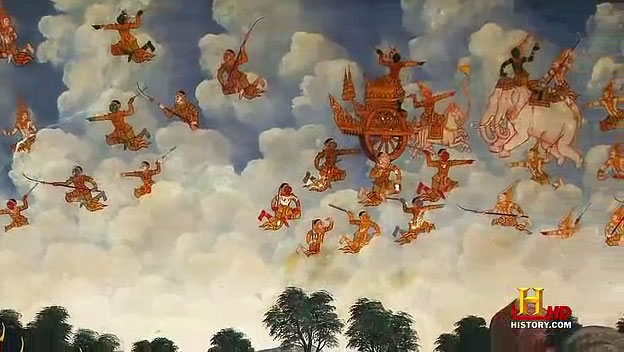 |
"The Mahabharata, a poem of vast length and complexity, achieved its present form in the second century A.D."
[ Reader's Digest Mysteries of the Unexplained]
"It is significant that Salva asked for a vehicle that could not be destroyed by Devas, Asuras, Gandharvas, Uragas, or Raksasas.
These are all powerful races of humanoid beings that were openly active
on the earth or in its general environs in Salva's time, and so
naturally he wanted to be able to defend himself against them.
"Salva's vehicle is described as an iron
city, and thus it must have been metallic in appearance and quite
large....Many Vedic vimanas are described as flying cities, and one is
reminded of the very large 'mother-ships' that are sometimes discussed
in UFO reports."
[ Richard L. Thompson, Alien Identities- Ancient Insights into Modern UFO Phenomena]
|
"The airplane occupied by Salva was
very mysterious. It was so extraordinary that sometimes many airplanes
would appear to be in the sky, and sometimes there were apparently none.
Sometimes the plane was visible and sometimes not visible, and the
warriors of the Yadu dynasty were puzzled about the whereabouts of the
peculiar airplane. Sometimes they would see the airplane on the ground,
sometimes flying in the sky, sometimes resting on the peak of a hill and
sometimes floating on the water. The wonderful airplane flew in the sky
like a whirling firebrand - it was not steady even for a moment."
[ Bhaktivedanta, Swami Prabhupada, Krsna ]
"An Air Force RB-47, equipped with
electronic countermeasure (ECM) gear and manned by six officers, was
followed by an unidentified object for a distance of well over 700 mi.
and for a time period of 1.5 hr., as it flew from Mississippi, through
Louisiana and Texas and into Oklahoma. The object was, at various times,
seen visually by the cockpit crew as an intensely luminous light,
followed by ground-radar and detected on ECM monitoring gear aboard the
RB-47. Of special interest in this case are several instances of
simultaneous appearances and disappearances on all three of these
physically distinct 'channels', and rapidity of maneuvers beyond the
prior experience of the air crew."
[ July 17, 1957 sighting reported in the journal Astronautics and Aeronautics ]
"It is significant that Salva dropped
such things as snakes, stones, and tree trunks from his vimana. There is
no mention of bombs, and it would seem that even though Salva possessed
a remarkable flying machine, he did not have the kind of aerial weapons
technology used in World War II. He did, however, have a quite
different technology, which could be used to affect the weather and
produce whirlwinds, thunderbolts, and hailstones."
[Richard L. Thompson, Alien Identities- Ancient Insights into Modern UFO Phenomena ]
|
There is this account by the hero Krishna
that is suggestive of more modern weapons. As he takes to the skies in
pursuit of Salva:
"His Saubha clung to the sky at a league's length...He threw at me rockets, missiles, spears, spikes, battle-axes, three-bladed javelins, flame-throwers, without pausing....The sky...seemed to hold a hundred suns, a hundred moons...and a hundred myriad stars. Neither day nor night could be made out, or the points of compass."[ The Mahabharata ]
Later, when Saubha becomes invisible, Krishna relates:
"But the Saubha itself has escaped the
attack, and at last Krishna hurls against it his 'favorite fire weapon',
a discus having the shape of the 'haloed sun'. Severed in two by the
impact, the aerial city falls down.
"Salva himself is killed, and with his death this episode of The Mahabharata comes to an end."
[ Reader's Digest Mysteries of the Unexplained ]
|
|
In another episode the fearful Agneya weapon, "a blazing missile of smokeless fire" is unleashed by the hero Adwattan.
|
|
"It would seem that The Mahabharata
is describing an atomic war! References like this one are not isolated;
but battles, using a fantastic array of weapons and aerial vehicles are
common in all the epic Indian books. One even describes a vimana-Vailix
battle on the Moon! The above section very accurately describes what an
atomic explosion would look like and the effects of the radioactivity on
the population. Jumping into water is the only respite.
"When the Rishi City of Mohenjodaro was
excavated by archaeologists in the last century, they found skeletons
just lying in the streets, some of them holding hands, as if some great
doom had suddenly overtaken them. These skeletons are among the most
radioactive ever found, on a par with those found at Hiroshima and
Nagasaki."
"Futhermore, at Mohenjo-Daro, a well
planned city laid on a grid, with a plumbing system superior to those
used in Pakistan and India today, the streets were littered with 'black
lumps of glass'. These globs of glass were discovered to be clay pots
that had melted under intense heat! "
[ D. Hatcher Childress, "Ancient Indian Aircraft Technology" ]
|
|
In The Anti-Gravity Handbook
There is another account of such a weapon:
"Cuka, flying on board a high-powered vimana, hurled on to the triple city a single projectile charged with all the power of the universe. An incandescent column of smoke and flame, as bright as ten thousand suns, rose in all the splendor... When the vimana returned to Earth, it looked like a splendid block of antimony resting on the ground."[ Mausola Purva ]
An Examination of the Technology
(1) The Dreamlike Quality of Vimanas
"O King, this beautifully decorated airplane
had been manufactured by the demon Maya and was equipped with weapons
for all types of combat. It was inconceivable and indescribable. Indeed,
it was sometimes visible and sometimes not. Seated in this airplane
under a beautiful protective umbrella and being fanned by the best of
camaras, Maharaja Bai, surrounded by his captains and commanders,
appeared just like the moon rising in the evening, illuminating all
directions."
[ Swami Prabhupada Bhaktivedanta, Srimad Bhagavatam ]
"The Vedic universe is described as a product of maya, or illusion,
and it can be thought of as a universal virtual reality system.....The
role of the computer is played by a fundamental energy called pradhana.
This energy is activated by an expansion of the Supreme known as
Maha-Visnu, who acts as the universal programmer. Thus activated
pradhana produces subtle forms of energy, and these in turn produce
gross matter."
"Uma, the wife of Lord Siva, is also
known as Maya Devi, or the goddess in charge of the illusory energy. She
is also the Mother Goddess who has been worshipped all over the world
by many different names. Since Siva is Uma's husband, he is the master
of illusion and technology. Thus there is a natural connection between
Lord Siva, who Salva approached to obtain his vimana, and Maya Danava,
the master of illusion who manufactured it."
[ Richard L. Thompson, Alien Identities - Ancient Insights into Modern UFO Phenomena ]
Many of properties of the vimanas bring
to mind the ephemeral nature of UFO's and their seeming ability to defy
the conventional laws of physics. Carl Jung has remarked on the
dreamlike quality of UFO's, and somewhere, amidst the observation of
bright lights and lost time, the delineation between objective and
subjective consciousness appears to break down.
"Our research has found extensive similarities between UFO encounters and religious and metaphysical mysticism, folklore, shamans' trances,
migraine attacks, and even the operations of the creative imagination.
Among the similarities are recurrent image-constants, a basically
consistent sequence of events, and the unusual "peak experience" quality
common to all. Also, very bizarre incidents in abduction reports have
parallels in these phenomena. For example, the embarrassingly incredible
"bodily dismemberment" sometimes reported by abductees is a regular
feature of shaman's "death-rebirth" trances."
[ Alvin H. Lawson ]
|
|
Do the vimanas represent an ancient
technology that utilizes the forces of nature (such as transient
geophysical electrical fields) to effect human consciousness and alter
the perception of reality? Certainly there have been rumors of
psychotronic devices, such as those reported tested in the "M" Triangle
area west of Moscow.
"There exists a natural phenomenon whose
manifestations border on both the physical and the mental. There is a
medium in which human dreams can be implemented, and this is the
mechanism by which UFO events are generated, needing no superior
intelligence to trigger them This would explain the fugitivity of UFO
manifestations, the alleged contact with friendly occupants, and the
fact that the objects appear to keep pace with human technology and to
use current symbols."
[ Jacques Valleé ]
|
An early UFO report in 1929 (18 years
before Kenneth Arnold filed his famous report which lead newspapers to
coin the term "flying saucers") may be instructive. In a valley in
between Mongolia and Tibet, a team of Norwegians and sherpas had just
completed building a shrine dedicated to Shambhala. (To Tibetan lamas, Shambhala [which means "quietude"] is a secret place of enlightenment in the northern mountains.)
According to a lama, the shiny oval was
a "Radiant form of Matter" from Shambhala. It was, he said, a
protecting force that was always near but could not always be perceived.
In Tibetan Buddhist belief"matter is a development of thought, crystallized mental energy".
Students are taught to mentally visualize
their tutelary god which slowly takes on the same quasi-reality as a
phantom monk. Under experienced control such ephemeral creations of the
mind, or tulpas can take many different forms such as man, animal, tree, rock, etc.
|
"Once the tulpa is endowed with enough
vitality to be capable of playing the part of a real being, it tends to
free itself from its maker's control....Tibetan magicians also relate
cases in which the tulpa is sent to fulfill a mission, but does not come
back and pursues its peregrinations as a half-conscious, dangerously
mischievous puppet. The same thing, it is said, may happen when the
maker of the tulpa dies before having dissolved it."
[ Alexandra David-Neel, With Mystics and Magicians in Tibet]
(2) Indian Technological Data
"There are ancient Indian accounts of manmade
wooden vehicles that flew with wings in the manner of modern airplanes.
Although these wooden vehicles were also called vimanas, most vimanas
were not at all like airplanes. "
[ Richard L. Thompson, Alien Identities- Ancient Insights into Modern UFO Phenomena ]
"According to ancient Sanskrit texts
found a few years ago by Westerners in a South Indian temple, vimanas
were open topped flying devices, not strictly UFOs since they were
restricted to the Earth's atmosphere. Dr. Roberto Pinotti is an Italian
scientist, and on the 12th of October 1988 was a speaker in the World
Space Conference in Bangalore, India. He referred to several Hindu texts
and pointed out that Indian gods and heroes fought in the skies using
piloted vehicles armed with weapons. These weapons consisted of seven
different types of mirrors and lenses which were used for offensive and
defensive purposes. The 'Pinjula Mirror' offered a form of 'visual
shield' preventing the pilots from 'evil rays', and the weapon named
'Marika' was used to shoot enemy aircraft. Dr. Pinotti said that these
weapons 'do not seem to be too different from what we today call laser
technology'.
"The vehicles themselves were made of
special heat absorbing metals, called 'Somaka, Soundalike and
Mourthwika'. According to Dr. Pinotti, the 'principles of propulsion as
far as the descriptions were concerned, might be defined as electrical
and chemical, but solar energy was involved as well.' Other scientists
have put forward the theory that the craft were driven by some sort of
mercury ion propulsion system. Dr. Pinotti concluded that the fact that
vimanas were written about hundreds, perhaps even thousands, of years
ago, plus that they resembled modern UFOs would suggest that India had a
'...superior but forgotten civilisation. In the light of this, we think
it will be better to examine the Hindu texts and subject the
descriptive models of vimanas to more scientific scrutiny'."
[ Nick Humphries, "UFO Guide" ]
|
|
"The Puspaku Car, that resembles the sun and belongs to my brother, was brought by the powerful Ravan; that aerial and excellent car, going everywhere at will, is ready for thee. That car, resembling a bright cloud in the sky, is in the city of Lanka."[ Ramayana ]
"According to the Dronaparva, part of the
Mahabarata, and the Ramayana, one vimana described was shaped like a
sphere and born along at great speed on a mighty wind generated by
mercury. It moved like a UFO, going up, down, backwards and forwards as
the pilot desired. In another Indian source, the Samar, vimanas were
'iron machines, well-knit and smooth, with a charge of mercury that shot
out of the back in the form of a roaring flame'. Another work called
the Samaranganasutradhara describes how the vehicles were constructed.
It is possible that mercury did have something to do with the
propulsion, or more possibly, with the guidance system. Curiously,
Soviet scientists have discovered what they call 'age-old instruments
used in navigating cosmic vehicles' in caves in Turkestan and the Gobi
Desert. The 'devices' are hemispherical objects of glass or porcelain,
ending in a cone with a drop of mercury inside."
[ D. Hatcher Childress, "Ancient Indian Aircraft Technology" ]
|
In The Anti-Gravity Handbook
"G. R.. Josyer, director of the
International Academy of Sanskrit Research in Mysore, India, stated on
September 25, 1952, that Indian manuscripts several thousands of years
old dealt with the construction of various types of aircraft for civil
aviation and for warfare.
"The specific manuscript on aeronautics
included plans for three types of vimanas (aircraft), the Rukma,
Sundara, and Shakuna. Five hundred stanzas of an ancient text treat of
such intricate details as the choice and preparation of metals which
would be suitable for various parts of vimanas of different types."
"There were eight chapters...that
provided plans for the construction of aircraft that flew in the air,
traveled under water, or floated pontoon-like on the water's surface.
Some stanzas told of the qualifications and training of pilots."
[ Brad Steiger, Worlds Before Our Own ]
|
"Indeed, there are a remarkable number of
stories which involve the construction of flying machines. Within some
of these stories, we find an interesting clue as to their possible
source. In another set of eleventh-century narratives, the Brihat Kath_
Álokasamgraha, carpenters are involved in the attempt to construct a
flying vehicle. When asked by Rumanavat to build a machine which can
fly, they reply that such aerial devices are only known to the Yavanas,
i.e., the Greeks.
"This is repeated again in the same story, with the
suggestion that it is kept as a secret by them. Another romance, the
'Deeds of King Harsha', from the seventh century, speaks of a flying
machine made by a Greek who had been taken prisoner. Laufer notes that
the term for the aerial machine in this tale is 'a mechanical vehicle
(yantray_na) which travels on the surface of the air'."
Clive Hart, The Prehistory of
Flight (Berkeley, 1985) "chronologically lists references in various
Western texts to flying machines [pp.195-197 et ff.] It is notable that
most of these early references to flight in these sources involve the
use of man-made wings. There are no discussions of more complex
man-carrying aerial vehicles as we found in the Chinese, Korean, and
Indian tales."
[ Dr. Benjamin B. Olshin, "Mechanical
Mythology: Private Descriptions of Flying Machines as Found in Early
Chinese, Korean, Indian, and Other Texts" (draft copy) ]
(3) Chinese and Korean Flying Devices
The earliest written Chinese account of
flying machines describes them as taking place in remote antiquity. The
following selections are from Dr. Benjamin B. Olshin,
"Mechanical Mythology: Private Descriptions of Flying Machines as Found
in Early Chinese, Korean, Indian, and Other Texts", which I am able to
quote with the kind permission of the author.
"The Chi Kung people were good at making mechanical devices for killing [all kinds of] birds. They could also make aerial carriages which, with a fair wind, traveled great distances. In the time of the emperor Thang [mid-second millennium B.C.], a westerly wind carried such a car as far as Yüchow, whereupon Thang had the car taken to pieces, not wishing his own people to see it. Ten years later there came an easterly wind (of sufficient strength), and then the car was reassembled and the visitors were sent back to their own country, which lies 40,000 li beyond the Jade Gate."[ Chang Hua, "Po Wu Chih" ('Record of Investigation of Things') in the Po Wu Chih ]
Like the devices described in the
Indian Brihat Kath Álokasamgraha, Chinese flying machines are often
described as being made of wood and fly according to straightforward
(although not understood) mechanical principles. The following accounts
also postdate the spread of Hellenistic culture.
"By the third century A.D., we read of people constructing a flying vehicle."
[ Dr. Benjamin B. Olshin, "Mechanical
Mythology: Private Descriptions of Flying Machines as Found in Early
Chinese, Korean, Indian, and Other Texts" (draft copy) ]
|
|
"Some use the inner part of the jujube [=date] tree to make a flying vehicle, using ox leather straps fastened to encircling blades, so as to propel this machine. Some others have the idea of making five snakes, six dragons, and three oxen [these are kites in the shape of these animals] encounter the 'hard wind', and so ride it (i.e., the vehicle), rising up 40 li. [That region] is called the Tai Qing ('Area of Upper Air'). In the Tai Qing region, the air is very hard, and can lift people. The Master says that a yuan [this word can mean 'kite' or 'hawk'] flying, spiraling higher and higher, only needs to straighten out its two wings and not flap them any more to move forward, because it is riding on the hard wind. The dragons when they first rise up, step on the clouds, going to 40 li [altitude], then fly by themselves. This account comes from the [Taoist] adepts, and is recounted, being handed down to ordinary people, yet the common people are not really able to understand it."[ Ko Hung (A.D. 283-343), Pao Pu Tzu ]
"...The picture we get of the device is quite
ambiguous, with ox leather straps somehow tied to a circle of swords or
blades, or blades [moving?] around. The motion of the blades, though,
is never really clearly described in the passage, nor is the overall
configuration of the vehicle. We are left with the nonetheless
interesting fact that there is a description of a mechanical device
intended for flying."
"This is precisely what is relevant in these
stories to the historian of science: the fact that a romantic tale or
story should employ a mechanical device and at times even include a
description of its construction or function. This fact does not
necessarily mean that the stories contain elements of fact, or actual
records of some now-lost technology."
[ Dr. Benjamin B. Olshin,
"Mechanical Mythology: Private Descriptions of Flying Machines as Found
in Early Chinese, Korean, Indian, and Other Texts" (draft copy) ]
|
The Koreans have accounts of similar flying machines, although of much more recent derivation.
Where were such machines manufactured?
|
"What caused the creation of this separate
category of 'technical myths' is not entirely clear. One what might well
ask why the some of the stories ever entered into discussions of
machines at all. Why didn't stories of winged beings and levitating
immortals simply continue? Why did this separate category of humans in
flying machines arise? Perhaps there is a connection to the development
of kites, which occurred at a period in China preceding many of these
tales of 'aerial carriages'. Kites gave people a view of flight made
practical: structures made of bamboo, wood, cloth, and paper, man-made
devices actually airborne. There are even stories of kites large enough
to hold individuals, a not implausible scenario."
[ Dr. Benjamin B. Olshin, "Mechanical Mythology:
Private Descriptions of Flying Machines as Found in Early Chinese,
Korean, Indian, and Other Texts" (draft copy) ]
[ Source : UFO Evidence - "Secrets of the Vimana" by Kamini Singh from South Asian Women's Forum, Monday Oct 16, 2000]
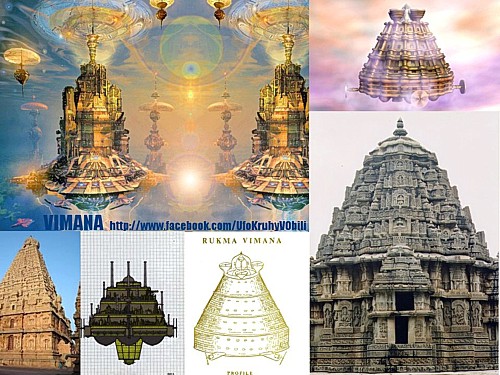
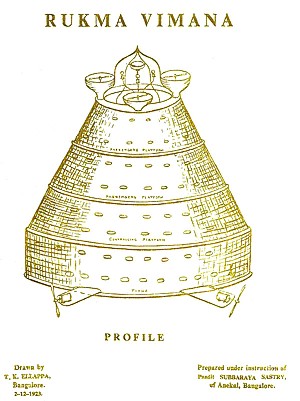
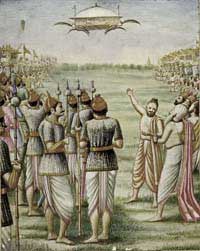
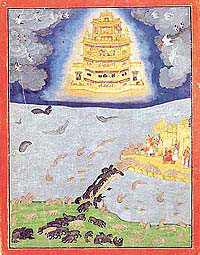
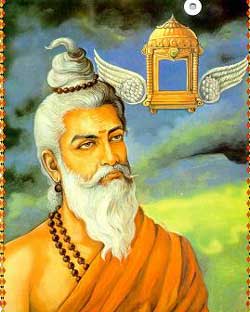
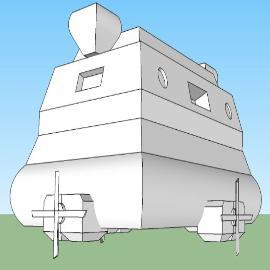
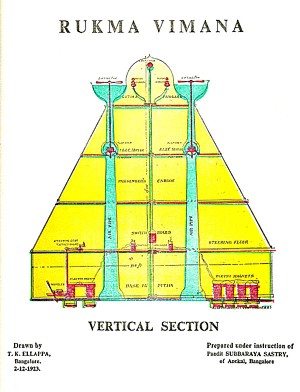
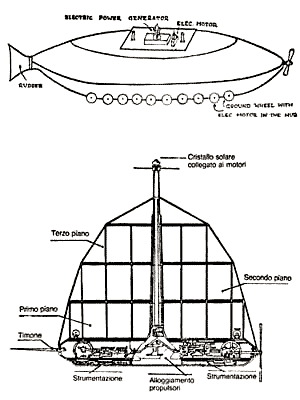
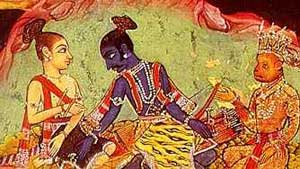
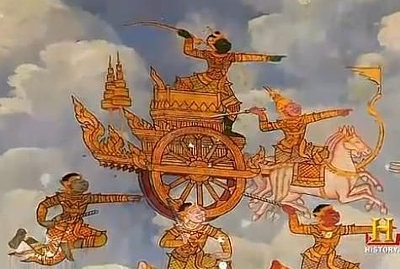
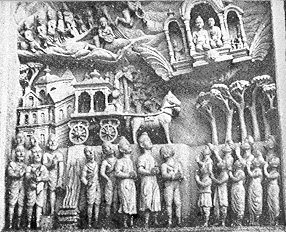
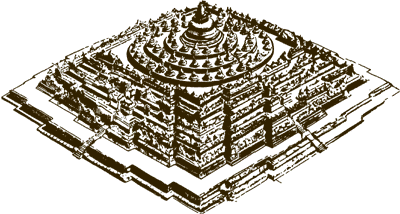
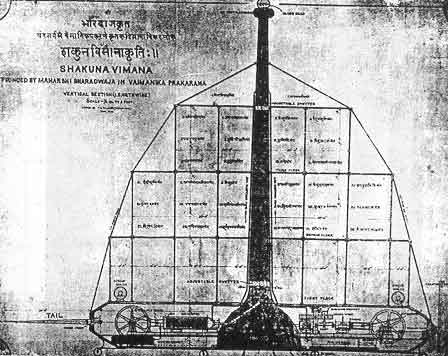
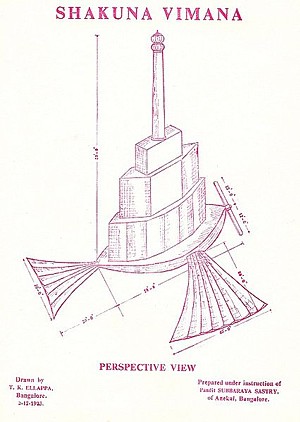
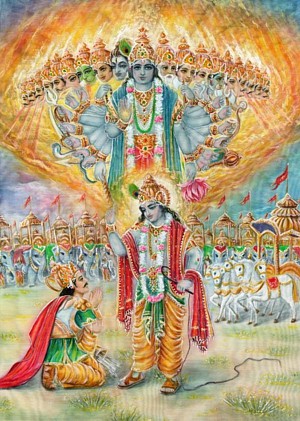
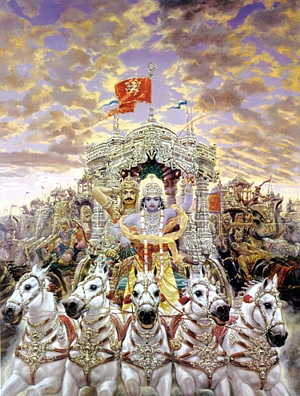
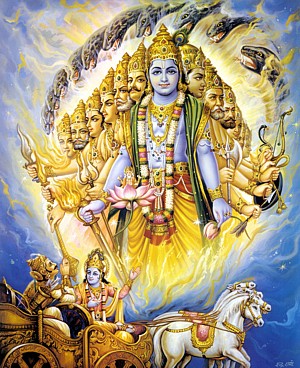
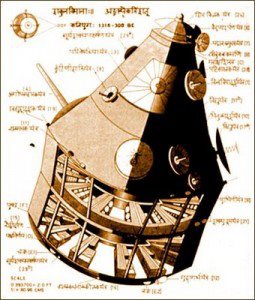
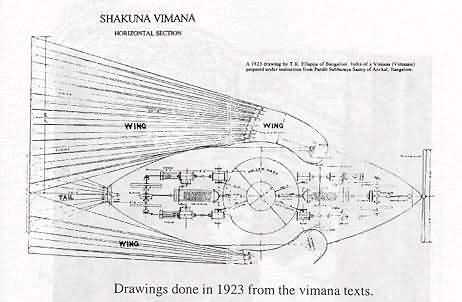
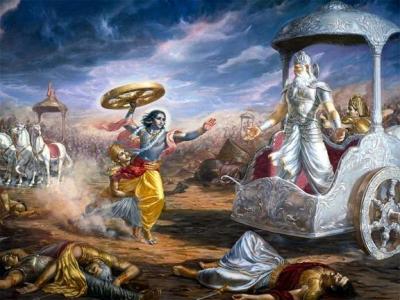
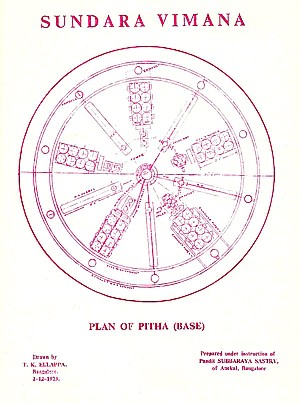
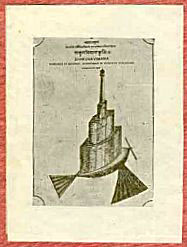
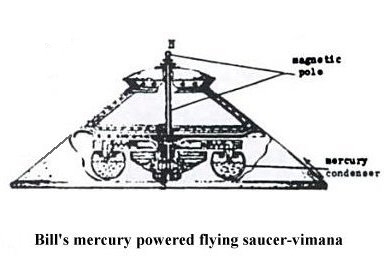
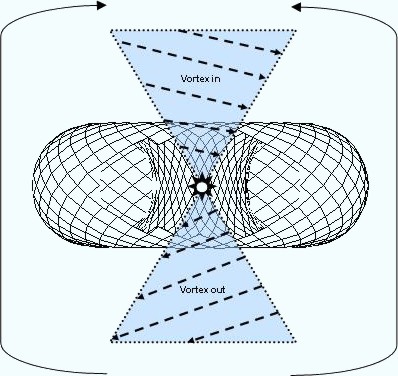
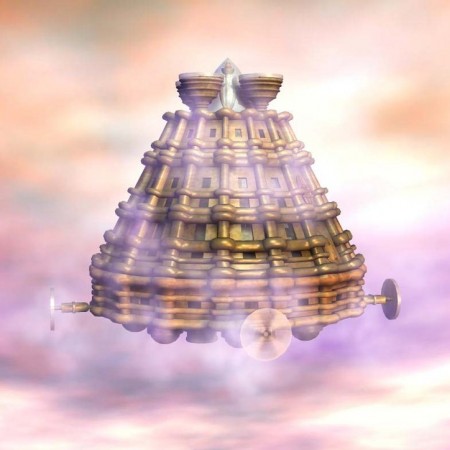
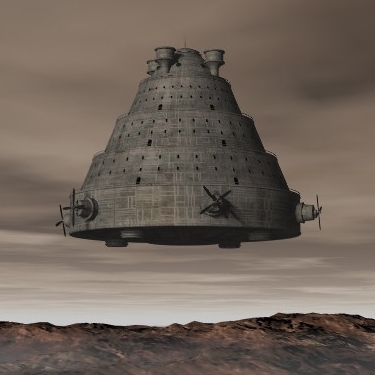
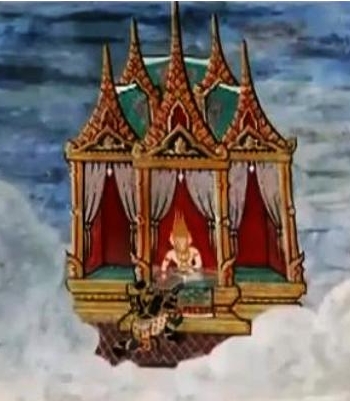
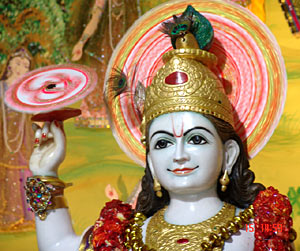
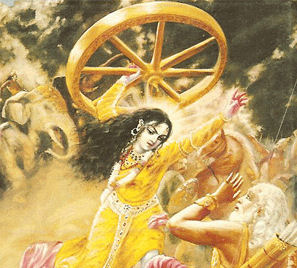

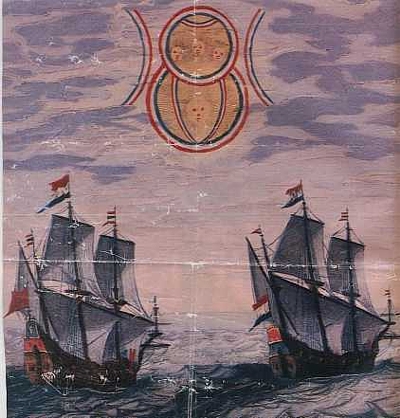
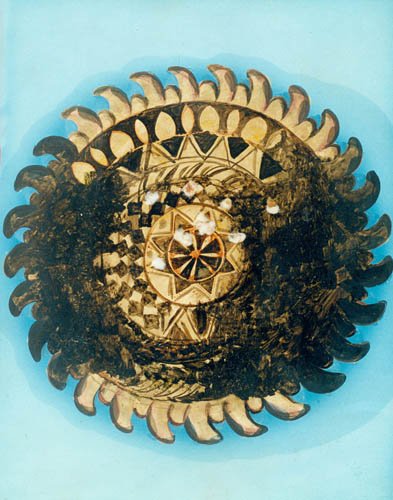
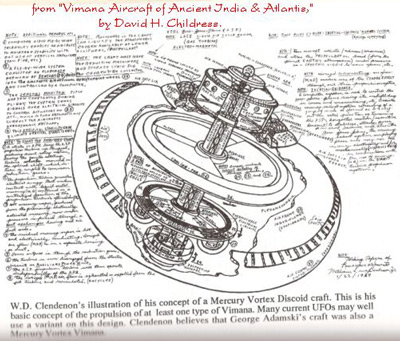
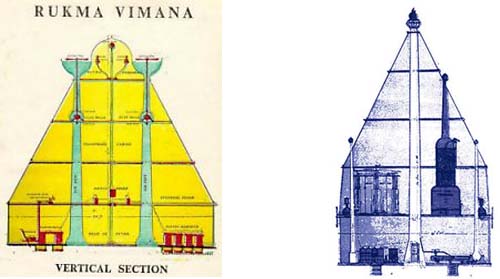
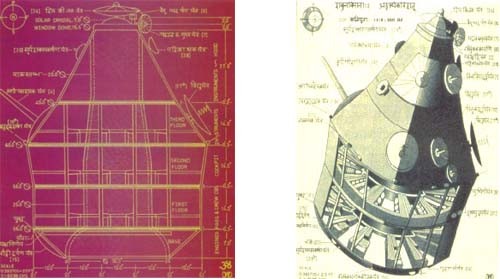
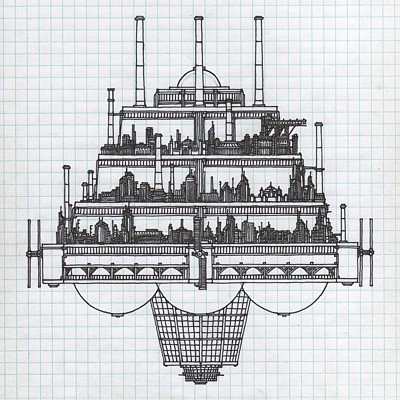
0 komentar:
Posting Komentar